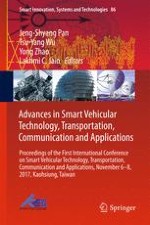2018 | Book
Advances in Smart Vehicular Technology, Transportation, Communication and Applications
Proceedings of the First International Conference on Smart Vehicular Technology, Transportation, Communication and Applications, November 6-8, 2017, Kaohsiung, Taiwan
Editors: Prof. Dr. Jeng-Shyang Pan, Dr. Tsu-Yang Wu, Prof. Dr. Yong Zhao, Prof. Dr. Lakhmi C. Jain
Publisher: Springer International Publishing
Book Series : Smart Innovation, Systems and Technologies
